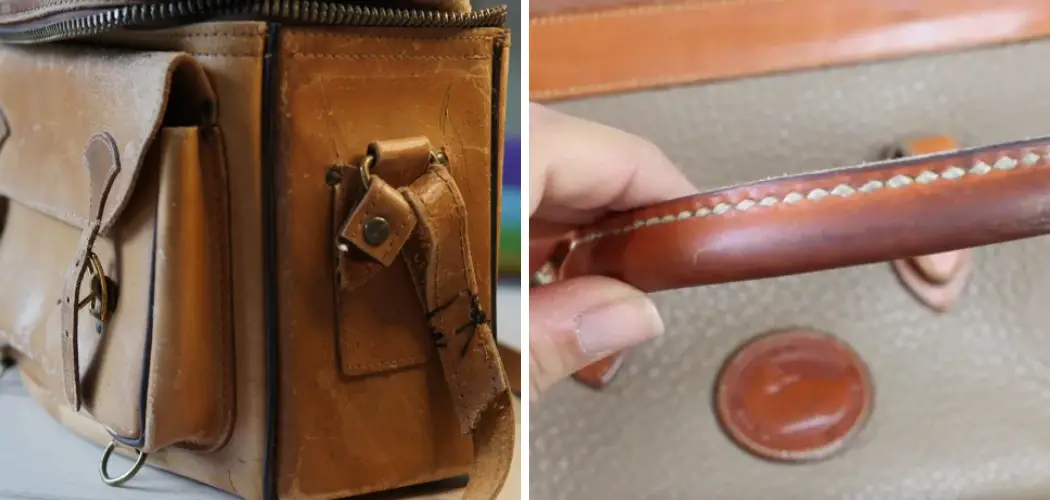Leather bags are timeless accessories that can last for years with proper care. However, over time, they may begin to show signs of wear, including scratches, stiffness, or loss of color. Reconditioning a leather bag is an essential process to restore its original luster and prolong its lifespan.

Whether it’s a vintage piece or a favorite everyday bag, learning how to recondition leather properly can rejuvenate its appearance and keep it looking like new. This guide will walk you through how to recondition leather bag back to life.
Why Recondition Your Leather Bag
Reconditioning your leather bag is crucial to maintaining its beauty, functionality, and durability. Without proper care, leather can dry out, crack, or lose its natural oils, leaving it brittle and prone to further damage. Regular reconditioning not only restores moisture and flexibility but also helps preserve the bag’s color and texture, making it look polished and well-maintained.
Furthermore, reconditioning can minimize the appearance of scratches and scuffs, giving your bag a refreshed and renewed look. Whether you want to extend the life of a sentimental item or simply keep your bag in pristine condition, reconditioning is a worthwhile investment in preserving its quality.
Benefits of Leather Reconditioning
Leather reconditioning offers numerous advantages that go beyond just enhancing the appearance of your bag. First and foremost, it helps to extend the lifespan of your leather bag by preventing deterioration caused by dryness or cracking. Proper reconditioning replenishes the natural oils in the leather, maintaining its flexibility and resilience. It also rejuvenates the color, restoring vibrancy and minimizing discoloration or fading over time.
Additionally, reconditioned leather is more resistant to everyday wear and tear, creating a protective layer that shields against stains and environmental damage. For older or well-used bags, reconditioning helps smooth out scratches and scuffs, making them less visible and giving your bag a refreshed, polished finish. By regularly reconditioning your leather bag, you not only preserve its functionality but also retain its value, ensuring it remains a timeless accessory for years to come.
10 Methods How to Recondition Leather Bag
1. Clean the Leather Bag Thoroughly
Before beginning the reconditioning process, it’s crucial to clean your leather bag thoroughly. Dirt, dust, and oils from your skin can accumulate on the surface, creating barriers that prevent conditioners and oils from penetrating the leather effectively. Start by gently wiping down the bag with a soft cloth to remove surface dust. If the bag is particularly dirty, use a leather cleaner or a mild solution of soap and water.
Dampen a cloth with the solution and gently rub it over the surface, paying close attention to seams and corners where grime often collects. Avoid soaking the leather, as excessive moisture can damage the material. Once clean, dry the bag with a soft, dry cloth and let it air dry completely in a well-ventilated area.
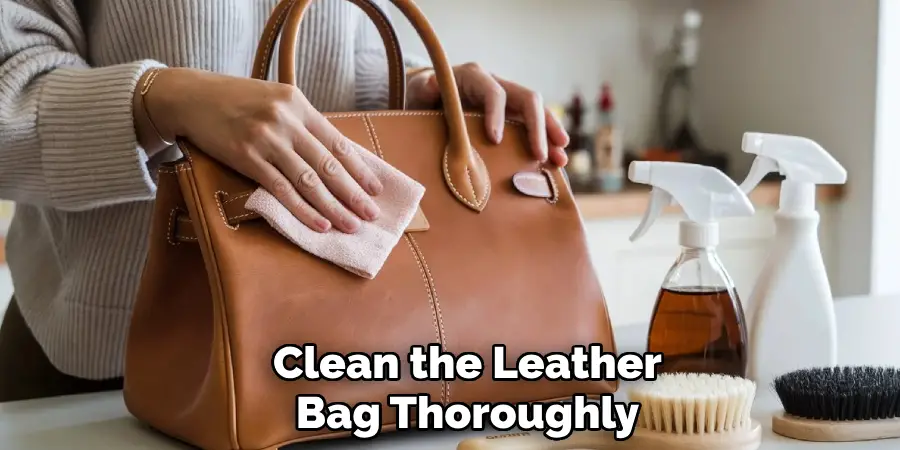
2. Remove Stains and Scuffs
Leather bags often develop stains or scuffs from daily use. To address these imperfections, you should treat the bag with care to avoid causing further damage. For minor scuffs, gently rub the area with a soft cloth or use an eraser specifically designed for leather care. For stubborn stains, use a leather cleaner or a specialized stain remover. Apply the cleaner to a cloth, not directly onto the bag, and gently work on the stain using circular motions.
Always test any cleaning product on an inconspicuous area first to ensure it doesn’t alter the color or texture of the leather. Once the stain is removed, clean the area again with a damp cloth and allow it to dry.
3. Apply Leather Conditioner
Leather conditioners are designed to replenish the natural oils that leather loses over time. They keep the leather supple, soft, and prevent it from drying out or cracking. Choose a high-quality conditioner that is suitable for your type of leather bag. After cleaning and drying the bag, apply a small amount of conditioner to a soft cloth and gently massage it into the leather in circular motions.
Make sure to cover the entire surface, including seams and corners. Allow the conditioner to absorb into the leather for a few minutes, and then wipe off any excess with a clean cloth. This will leave the leather feeling nourished and refreshed.
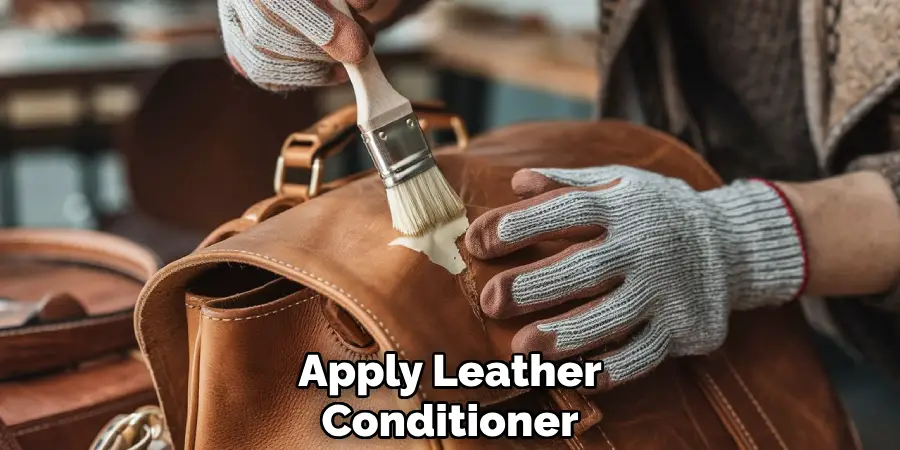
4. Use Leather Oil for Deeper Conditioning
For bags that have become especially dry or stiff, using a leather oil can provide deeper conditioning. Leather oils, such as mink oil or neatsfoot oil, penetrate the leather fibers more deeply than regular conditioners, providing additional nourishment. Apply the oil sparingly to a clean cloth and rub it into the leather in small sections, working it in thoroughly.
Be cautious with the amount you use, as too much oil can darken the leather or leave a greasy residue. After applying, allow the leather to sit for several hours or overnight to fully absorb the oil. Finally, wipe off any excess to restore the leather’s original appearance.
5. Recolor Faded Leather
If your leather bag has developed discoloration or faded patches due to sun exposure or wear, recoloring the leather is an effective way to restore its vibrant appearance. Use a leather dye or recoloring balm that is specifically designed for leather bags.
Choose a color that closely matches the original shade of your bag. Using a soft cloth or sponge, apply the dye in light, even layers, ensuring you cover any faded areas. Be sure to follow the manufacturer’s instructions for the number of layers required. Allow each layer to dry fully before applying the next, and let the bag cure for at least 24 hours before using it.
6. Treat Leather with Waterproofing Solution
To enhance the longevity of your leather bag and protect it from water damage, apply a waterproofing solution. Leather can be highly susceptible to water stains and moisture damage, which can cause it to lose its shape or degrade over time. A leather-specific waterproofing spray or cream can help protect the bag from water and environmental elements.
After cleaning and conditioning the bag, lightly spray the waterproofing solution over the entire surface. Be sure to follow the product instructions, and test the solution on a small, inconspicuous area first. Once applied, allow the bag to dry completely before use.
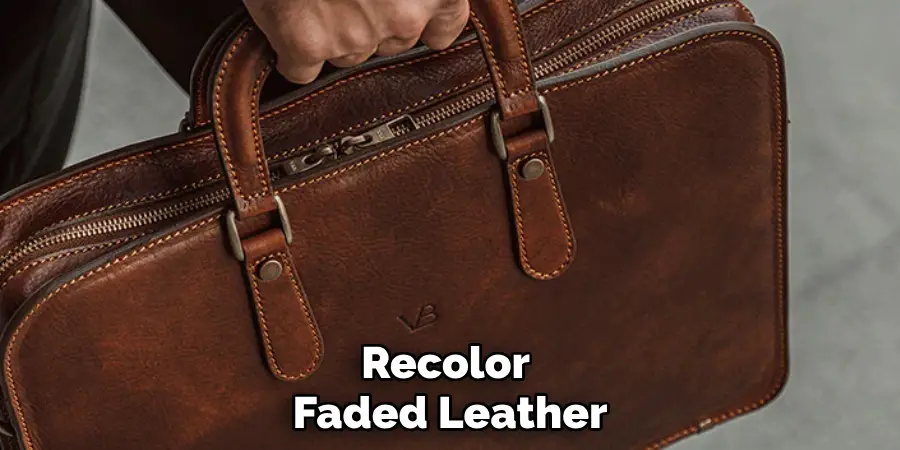
7. Restore the Shape of the Bag
Leather bags, especially those made from softer leather, can lose their shape after prolonged use or improper storage. To restore the bag’s shape, first ensure that it is thoroughly cleaned and conditioned. Then, you can use a few methods to help reshape it. One approach is to stuff the bag with soft tissue paper or a cloth to gently push it back into its original shape.
If the bag has structured compartments or sharp edges, use a shoehorn or similar tool to carefully reshape those areas. Allow the bag to dry naturally, avoiding direct heat or sunlight, which can cause the leather to harden or crack.
8. Treat Scratches and Scuffs
Over time, leather bags often develop minor scratches or scuffs, especially if they’re made from softer leather types. While these marks may seem permanent, many of them can be treated and reduced with the right techniques. For light scratches, use a leather conditioner or oil to help minimize their appearance. Gently massage the affected area with a soft cloth in circular motions, which can help the leather “heal” and blend the scratch.
For deeper scuffs, try using a leather repair cream or filler that matches the color of your bag. Apply the cream sparingly and let it dry before buffing the area with a soft cloth.
9. Buff the Leather for a Shiny Finish
Once you’ve cleaned, conditioned, and repaired your leather bag, you’ll want to restore its natural shine. Buffing the leather is a simple yet effective way to give it a polished finish. Use a clean, soft cloth to gently buff the surface of the bag in circular motions. Buffing not only enhances the leather’s shine but also helps to even out the finish, ensuring the conditioner or oil has been absorbed properly.
It can also help remove any excess product, leaving behind a smooth, glossy appearance. Avoid over-buffing, as excessive friction could damage the leather over time.
10. Regular Maintenance
The key to keeping your leather bag looking great for years is regular maintenance. Preventative care, such as cleaning and conditioning your leather bag every few months, will help it stay soft and free of cracks. Store your bag in a cool, dry place away from direct sunlight, as exposure to light and heat can cause the leather to fade or stiffen.
When not in use, stuff the bag with tissue paper to maintain its shape, and avoid overloading it with heavy items. By taking the time to regularly care for your leather bag, you can preserve its beauty and durability for many years to come.
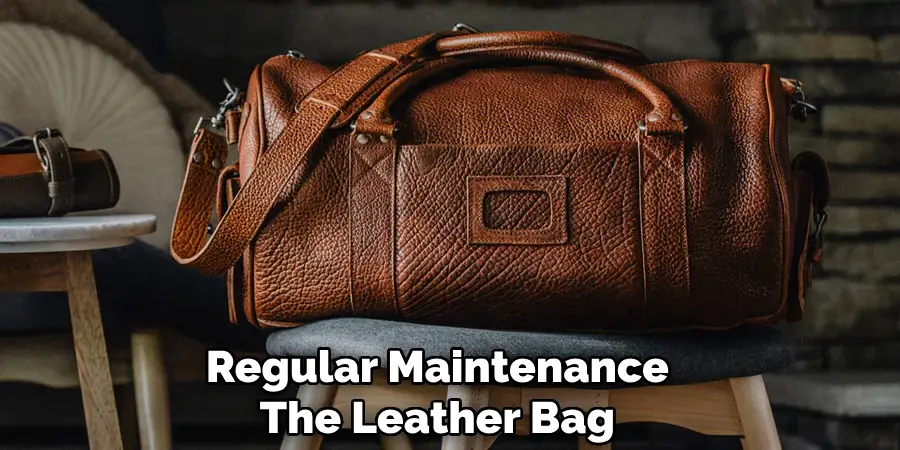
Conclusion
Caring for your leather bag doesn’t have to be a daunting task. With proper cleaning, conditioning, and maintenance, you can ensure that your bag remains a timeless accessory for years to come.
By following these steps, you’ll not only protect the leather from wear and damage but also enhance its natural beauty and longevity. Thanks for reading our blog post on how to recondition leather bag!
We hope you found it helpful and informative.
You can also check it out Clean Suede Leather Jacket

